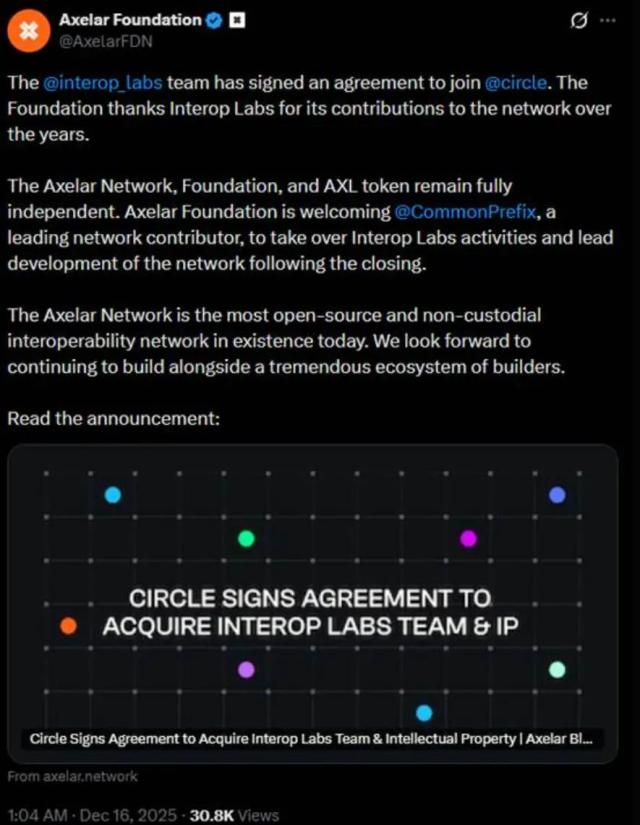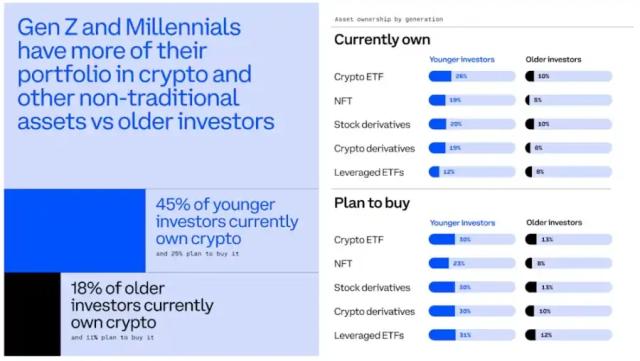
Author: Stella L (stella@footprint.network)
Data Source: Footprint Analytics Mainnet Research Page
In February 2025, the Bit blockchain market experienced a significant market adjustment, posing challenges to both established networks and emerging mainchains. Bit remained stable, further strengthening its dominance, while most chains including Solana, Avalanche, and Ethereum experienced significant declines. Nevertheless, development activity in the mainchain field did not slow down: the launch of the Berachain mainnet, the upgrade of the Base infrastructure, and the launch of Uniswap's Layer 2 were the highlights of the month.
Market Overview
The market saw a clear pullback in February: Bit fell from $98,768 to $84,177, a 14.8% drop, while Ethereum fell even more, from $3,065 to $2,216, a 27.7% decline. In the last week of the month, selling pressure further intensified as security panic sentiment spread.

This pullback closely followed the bullish trend in January, but market signals were mixed, with investors oscillating between optimism and concerns over security vulnerabilities. Market sentiment deteriorated, and risk appetite declined, particularly in speculative areas like Memecoins. Globally, the North American market showed cautious optimism due to policy changes, while the Asia-Pacific market felt the impact of hacker attacks more strongly.
Regulation and Policy Changes
The Trump administration's cryptocurrency executive order focused on self-custody and stablecoin development, providing rare policy clarity for the industry. However, the $1.5 billion hack of Bybit on February 21, the largest loss in cryptocurrency history, raised new security concerns, quickly shifting market sentiment. Meanwhile, the SEC's attitude softened, suspending investigations into companies like Coinbase, Binance, and Uniswap, and dropping its appeal against the "Trader's Rule". The bipartisan-supported GENIUS Act (Stablecoin National Innovation and Guidance and Unified Standards Act) further strengthened the regulatory framework for stablecoins, indicating a friendly regulatory environment in the US.
Investor behavior reflected this turbulence. The Memecoin frenzy driven by tokens related to Argentine President Milei quickly cooled due to negative news, with valuations plummeting and trading volumes shrinking significantly. This shift suggests the market is retreating from high-risk assets.
Layer 1
Layer 1 mainchains were generally under pressure, with the total market capitalization declining 20.8% to $2.3 trillion. Bit's dominance rose from 71.3% to 74.2%, while Ethereum's share shrank from 14.0% to 11.9%. BNB Chain's share rose slightly to 3.7%, but Solana saw its share slide from 4.0% to 3.3% after a 36.3% price plunge.
Litecoin bucked the trend, rising 1.0% to $128.7, while Solana (-36.3%) and Avalanche (-35.7%) underperformed.

DeFi TVL declined 20.0% to $82.9 billion, with Ethereum at $44.9 billion (-21.7%) and Solana at $8.6 billion (-34.1%).
Berachain emerged as a rising star, quickly climbing to the sixth position after launching its mainnet on February 6, with a TVL of $3.2 billion. The chain issued 80 million BERA tokens, using a "Liquidity Proof" model - an innovative staking method that converts liquidity into network security. Following a $100 million raise in 2024, the airdrops and governance incentives this month have energized market enthusiasm. Unlike traditional Proof-of-Stake, this approach may redefine how mainchains balance growth and stability, making Berachain a project to watch.

The Memecoin frenzy on Solana has clearly cooled. High-profile failures, such as the tokens related to Argentine President Milei, have damaged market confidence, leading to a significant decline in trading volume on DEX platforms like Raydium. While Memecoins will not disappear, they can be viewed as digital collectible cards, and their frenzied peak may have passed, with traders starting to focus more on fundamentals than hype.
Bit Layer 2 & Sidechains
The TVL of Bit L2 and sidechains contracted 24.5% from $2.7 billion to $2.1 billion. Core led with $460 million in TVL (down 42.0%), followed by Bitlayer ($350 million) and BSquared ($320 million). BOB stood out, declining only 7.9% to $220 million.

Among mid-sized platforms, Merlin performed relatively well, with TVL declining only 9.3% to $150 million. Smaller platforms faced greater pressure, with SatoshiVM down 31.5%, MAP Protocol down 29.6%, and Interlay down 27.4%.

The sluggishness in this area is consistent with the view of Stacks co-founder Muneeb Ali at Consensus 2025: "More than two-thirds of existing Bit Layer 2 projects will disappear within three years as the initial enthusiasm fades." He predicted the market will face severe challenges, and the industry's low performance in February suggests consolidation may already be underway. Looking ahead, platforms that can prove their real-world utility may prove more resilient than those relying solely on momentum.
Ethereum Layer 2
Ethereum L2 TVL decreased by 23.4% to $14 billion. Arbitrum maintained its leading position with a TVL of $4.5 billion (down 33.4%), while Base climbed to second place with a TVL of $4.2 billion (down 10.6%), pushing Optimism ($2.1 billion) to third place. Polygon zkEVM surged 104.1% to $300 million, becoming a rare highlight this month.

Base launched Flashblocks (faster transaction confirmation), Appchains (customized L3), and smart wallet subaccounts to maintain user stickiness. Unichain mainnet launched on February 16, with its testnet having processed 95 million transactions cumulatively, positioning itself as a game-changer in scalability performance, with heavyweight institutions like Circle already on board. Starknet's Nums application chain, as a Layer 3 gaming innovation, showcased the future of modular design.

Meanwhile, although not an Ethereum Layer 2, Sonic EVM's Mobius mainnet launch on February 27 as Solana's first SVM chain extension attracted significant attention, achieving 10,000 TPS and bringing $47.6 million in funds to Aave within a few days. These initiatives indicate that Layer 2 projects are doubling down on technology, rather than just hype.
Vitalik Buterin commented on February 19, emphasizing the need for Ethereum to define its position in the increasingly competitive landscape. He pushed for Layer 2 to take the lead in scalability (such as 17x transaction boost) and interoperability, noting that they have evolved from "advanced multi-sig" to powerful networks. Although he did not directly comment on Sonic EVM, its EVM compatibility and speed resonate with his vision of seamless integration into the "Ethereum Cosmos." However, he also expressed dissatisfaction with the casino-like tendencies in the ecosystem, calling for a focus on real value rather than speculative bubbles.
Funding Situation
Funding activity slowed down, with 6 deals completed in February, totaling $32.4 million. Mango Network raised $13.5 million for its EVM-MoveVM hybrid chain, planning to launch in Q1 2025. Fluent Labs received $8 million in funding to develop a multi-virtual machine Layer 2 connecting Ethereum and Solana.

The data for this report is sourced from the Public Chain Research page of Footprint Analytics, which provides an easy-to-use dashboard containing the most critical statistics and metrics in the public chain domain, updated in real-time.
The content of this article is for industry research and communication purposes only and does not constitute any investment advice. The market has risks, and investments should be made with caution.
About Footprint Analytics
Footprint Analytics is a comprehensive blockchain data analysis platform that simplifies complex on-chain analysis for enterprises, DeFi projects and researchers. It provides customizable solutions built on the platform's infrastructure to help users create actionable insights and understand blockchain data. The platform focuses on user-friendliness, with an emphasis on UI, UX and data visualization. Footprint Analytics covers a wide range of blockchain ecosystems, including Ethereum, BNB Chain, Polygon, Solana, Avalanche, Celo and more.






